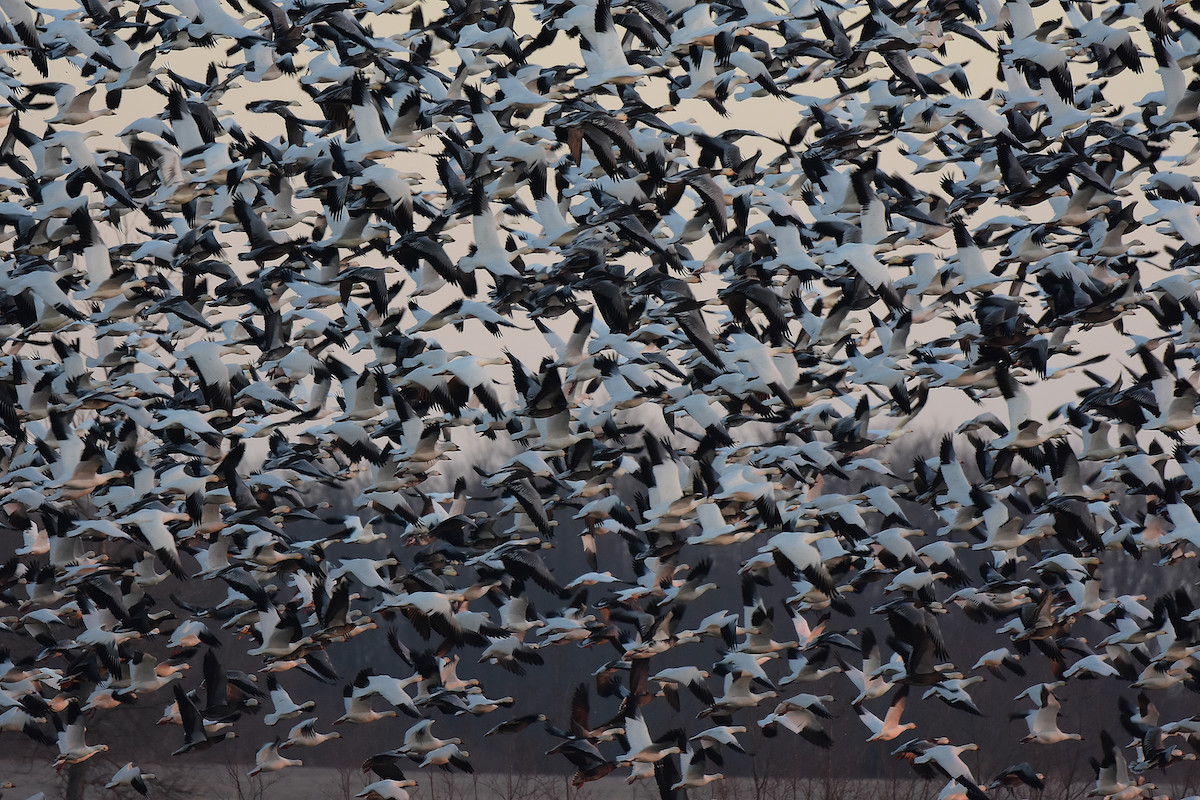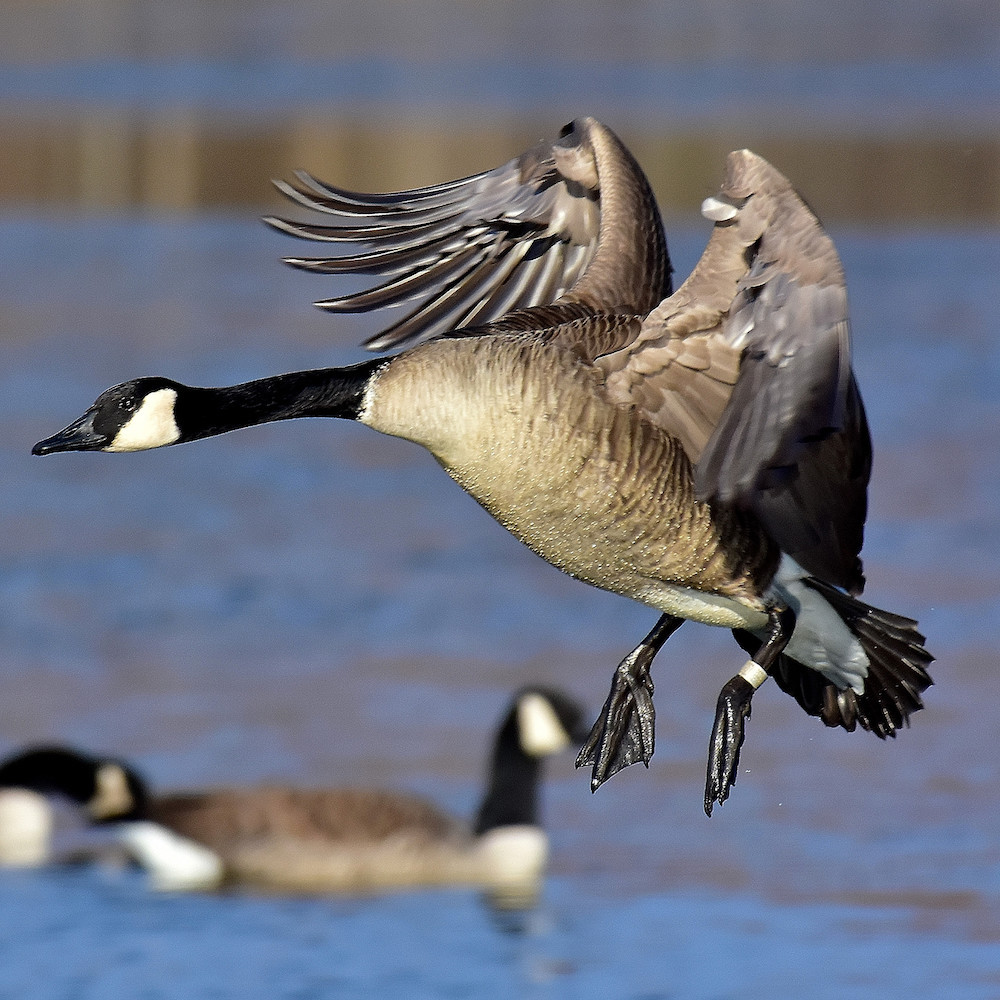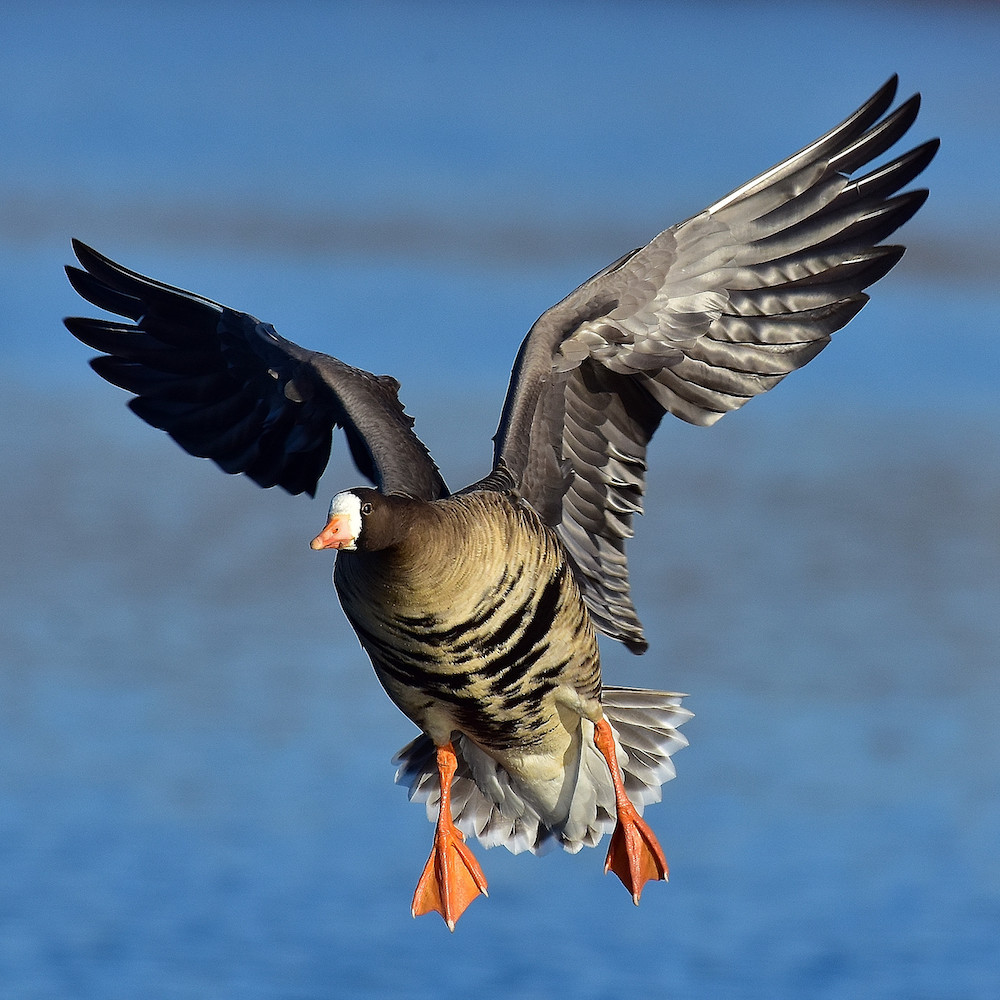
Photo by Kevin Wright.



Photo by Kevin Wright.

We cannot visualize when something is beginning some type of trend. Not from the very beginning anyway. You might begin to notice it after a few years or it just might take several until you realize that something just might be happening. The big question then would be: Why is this happening?
Let’s take Canada geese in central Illinois for the first example. I guess it was sometime in the 1980s when I began to notice that there were less birds in the sky and more on the ground and for lasting periods. The birds just were not leaving. That trend continued and the next thing we knew all the hunters who traveled to southern Illinois to hunt geese no longer had to travel south for good action.
Now let’s follow up with white-fronted geese. My first experience with specks occurred back in the early nineties. Along the shoreline of a park lake I noticed five geese that I had never seen in Fulton County. I had to get my waterfowl book out to positively identify these birds. What? The following year I noticed a few more. The number climbed a few more each year, and now thousands upon thousands of specks pace through Illinois during the migration periods.

I guess it was also about that same time when snow geese made a change in their migration patterns and habits, filling the Illinois skies with a sea of white.
“I think there are a variety of factors influencing migration, depending on the species,” explained Randy Smith, Illinois Department of Natural Resources Wetland Wildlife Program Manager. “Some of that could be related landscape level changes, like changes in waste grain availability or broader issues such as climate change and the winters being less severe.”
“Regarding white-fronts, I’m less certain,” he continued. “They seemed to become more and more abundant in southern Illinois first, which was perhaps a function of winter-severity, and not really outside of their normal traditional wintering with the Mississippi Alluvial Valley (MAV).”

How about timing then? Smith noted that “We have some data capturing this change from our aerial inventories in southern Illinois. That type of data are not terrible easy to access. But as far as timing I think it was the late 1990s and into the early 2000s when they first started to be abundant in southern Illinois.”
About white-fronts and snows. Smith said “White-fronts and snows have definitely expanded their range and abundance within Illinois. I have to think that as those populations have grown they have somewhat expanded on the landscape naturally, and also taken advantage of abundant food and staging areas that large lakes and surrounding agricultural land in Illinois provides.”
When asked if this new migration system is going to be the new norm Smith said “I think the exact reasons are still somewhat of a mystery as migration behaviors. For instance, studies using satellite or GSM (cellular network) transmitters have shown that white-fronts largely migrate to the MAV on their southward migration, as would be traditionally expected. Then, if weather conditions are mild, they seem to bounce back to areas within Illinois, but of course will head back south as winter conditions demand.”

So, as you can see there are a number of factors leading to these new migration patterns. Of course, weather plays a big role in this process as well. During periods of mild weather, the geese seem to show up early and can be present much of the winter. Same then goes for harsher weather, they show up late and typically stay for much shorter periods of time.
Hunters who are interested in obtaining detailed information about the timing of the arrival of various species of geese in Illinois should check out the USFWS Hunter Harvest Report.
The 2011 report noted that 4,379 snow geese, 2,695 blues and 3,032 white-fronts were taken. A large decline in snows (694) and blues (174) was noted in the 2019 report, however, white-front numbers more than doubled at 6,767.
If we go all the way to 1999 numbers looked something like this: snows (1,076) with no blues or white-fronts harvested. The following year (2000), snow and blue goose numbers jumped dramatically at 3,963 and 3,302 respectively with white-fronts remaining at 0. The spring light goose conservation order began in some states in 1999 and the 2000 harvest numbers may be a significant contributor/cause of the snow/blue harvest jumping from 1999 to 2000.

Kevin Wright is an award winning outdoor writer and wildlife photographer whose work has been published in a number of publications and websites throughout the country. He lives and works out of central Illinois.
Submit a question for the author
Question: I am an amateur photographer and I live in Paducah, KY. I want to take some 35mm pictures of geese migrating in ILL. When and where would be a “good” place to do that? Thanks.